May 22, 2016
Martha O'Kennon
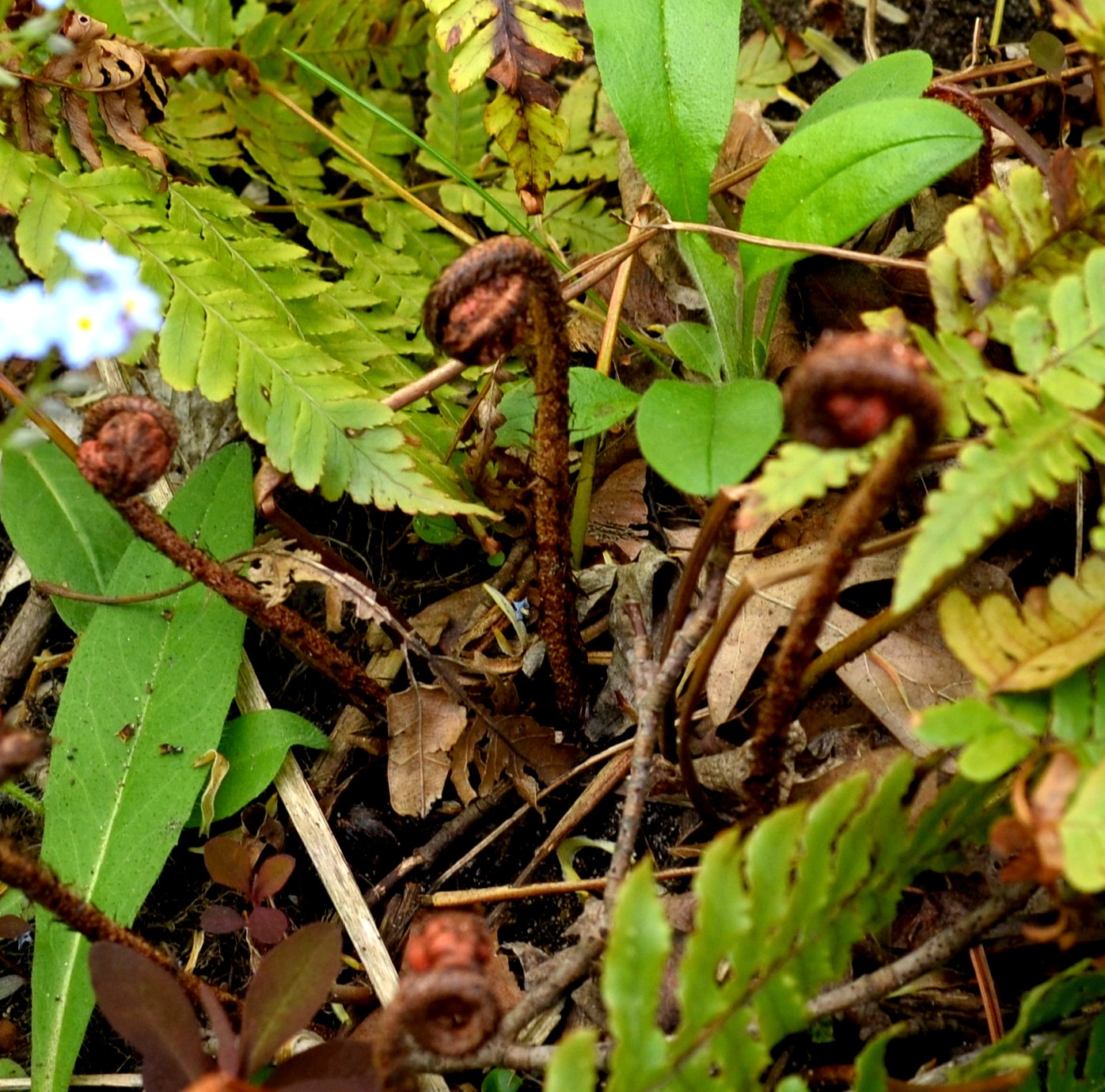
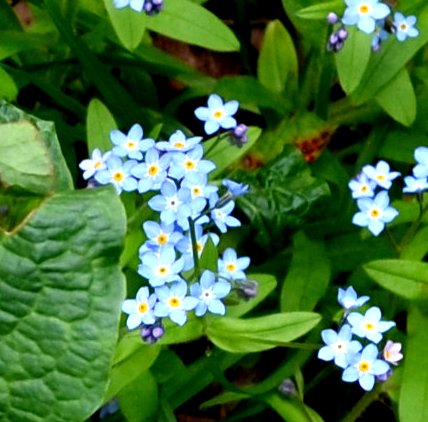
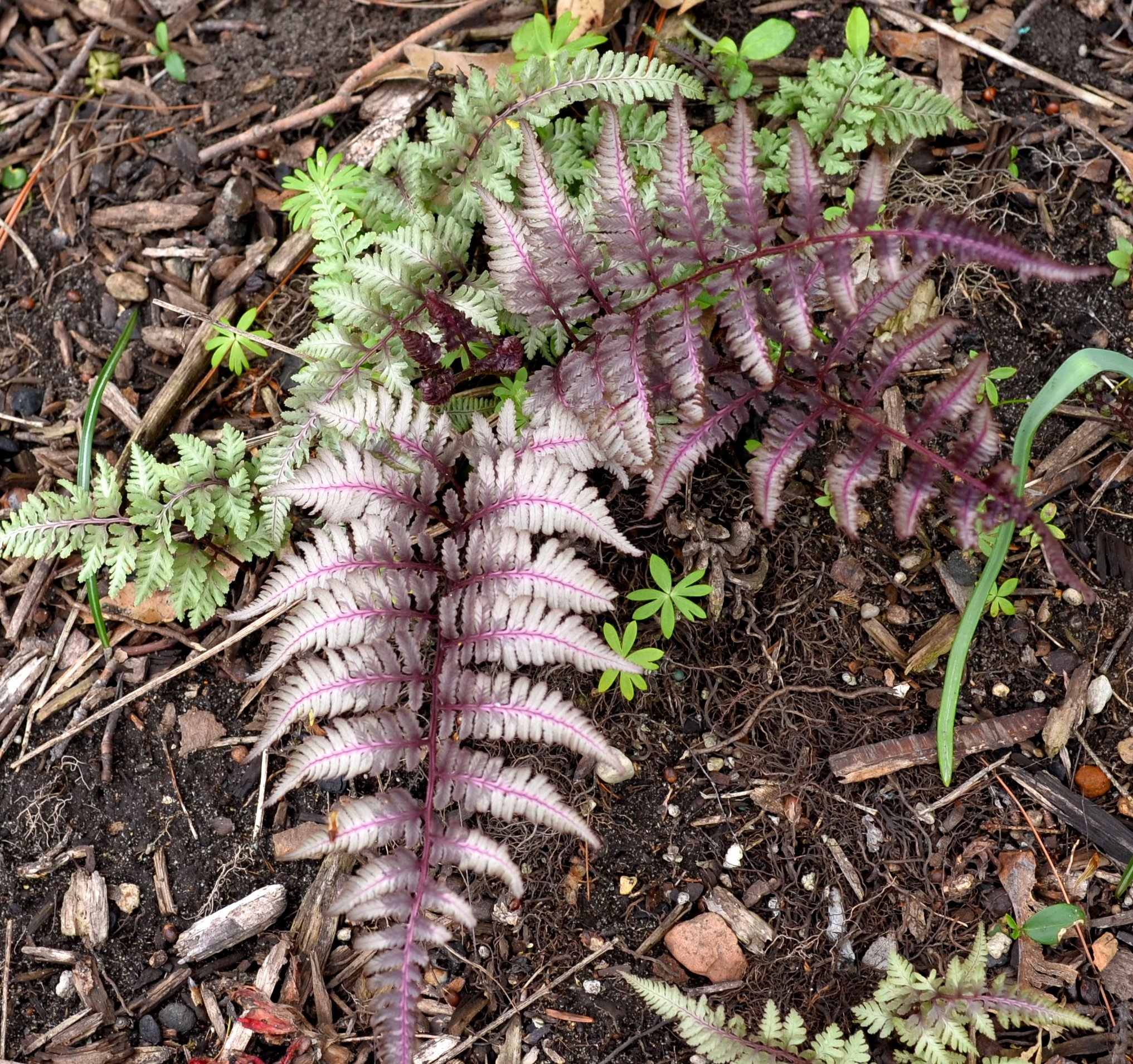
What a week! Only a month till the arrival of summer/winter and things are humming out there. Many small bees have arrived, and the scope of the "bugs" out there has widened amazingly. The ferns are getting bigger - and spreading by themselves now. For years since transplanting them, they have been somewhat touch-and-go. The autumn fern (on the left), which will have orangey - brownish fronds when time comes, and the Japanese painted fern (on the right) look the strongest for this time of year for years! And now the forget-me-not is blooming all over everything, and yesterday I was out pulling up the over-grow.
Remember that there is information in the name of the file for each image. You can see it by mousing over the image - look at the lower left of the screen.
I would try clicking on the image. If the little "+" sign appears, it means you can enlarge again. While it is in "+" mode, click on something you want to see more clearly and it will zoom to that section. Then the info is displayed in the address line above. If the image has been cropped
so that clicking on it doesn't result in a larger picture, you can always hit control-plus to increase the size of the image.
Oh! Did I mention that I finally gave the talk?. Several local kids came and signed an interest sheet for forming a small bug club. People laughed in all the right places, and the projector was magnificent. It took some pictures of some quite tiny insects and made them huge and recognizable. In case you missed it, or you were there but want to look at it again (including some extra info pages), Here's the url!
Now we are seeing (and able to tell apart) many varieties of ant. Some of them almost look like robot ants, like this black-reddish-black fellow, a member of Carpenter and Sugar Ants. This reddish-brown scurrier is a Small Honey Ant, and these good-sized black ones which have been running all over the shop wall near the small window, which is right under where a euonymus brushes against the shop, are probably Eastern Black Carpenter Ants, though the photo doesn't show the yellow hairs on the abdomen in that case. Wonder what will happen when I trim back that nosy branch!
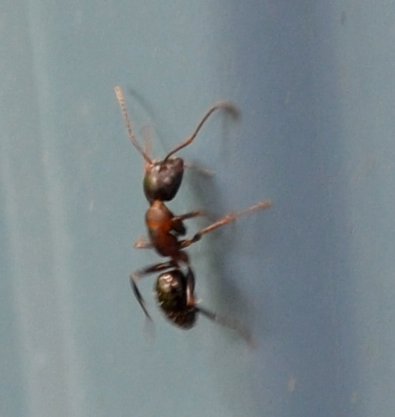
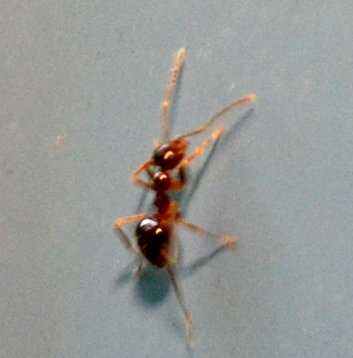
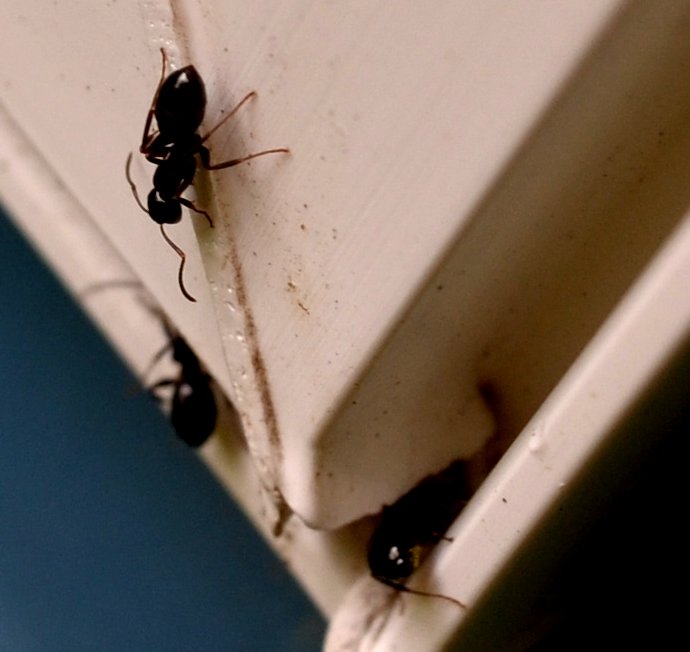
When I said "humming", one of the practitioners was still the "carpenter bee". Picture 1 may show one, or perhaps it is a Common Bumble Bee tired out after an afternoon nectar-tasting party. Then we have a tiny Bee snuggled into a mustard blossom, and a Honey Bee also enjoying the mustard blossom.
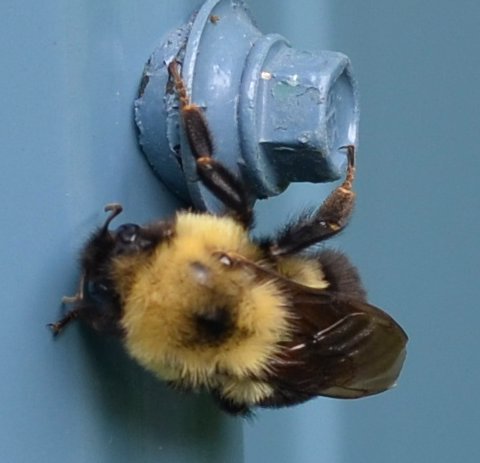 .
.
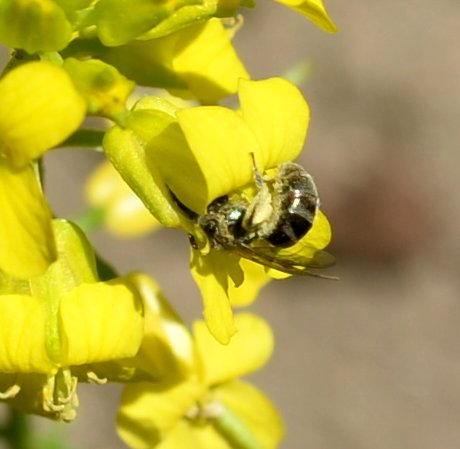
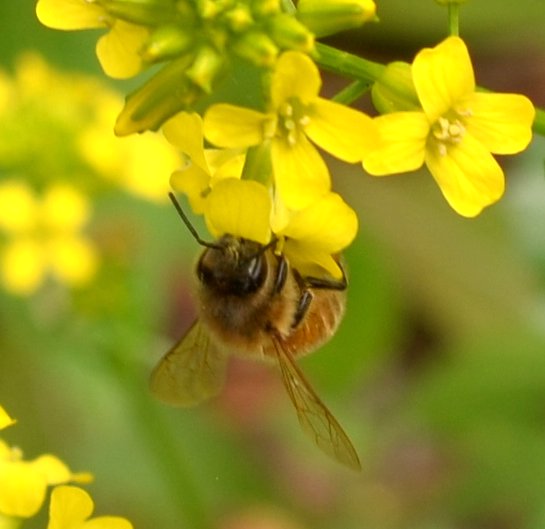
Here are also a mason bee resting in one of our unknown weeds, a Nomad bee resting in some dry leaves, and a total stranger sitting on a raspberry leaf.
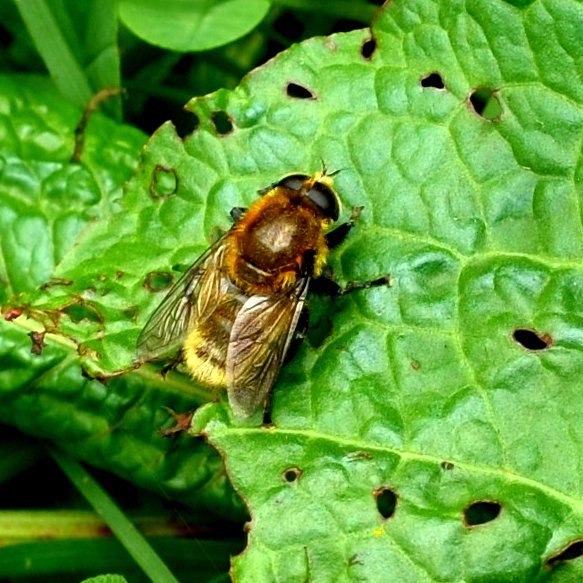
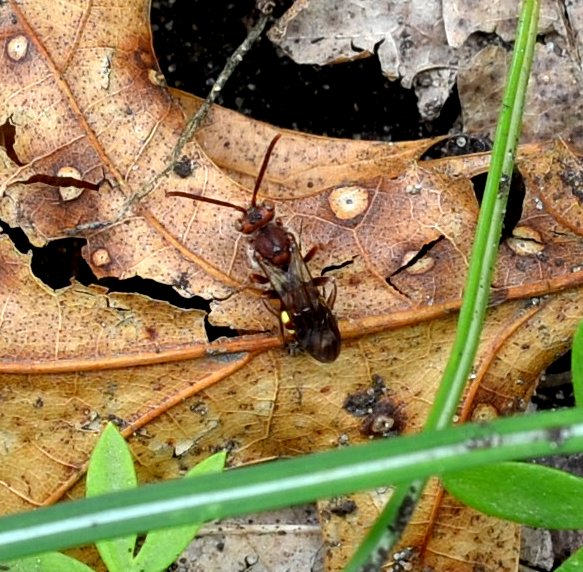
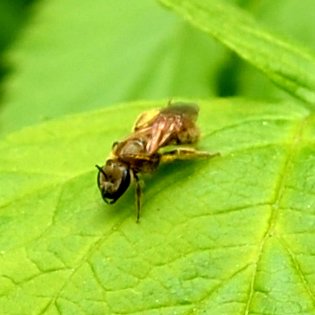
Beetles are finally enjoying an ascendency. From a lowly and tiny Carpet Beetle, to a Checkered Beetle, to an "Antlike Flower Beetle" (Notoxus desertus) , they're here!
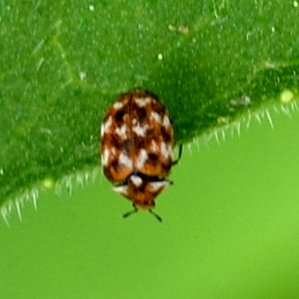

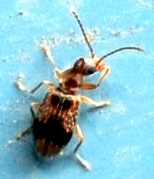
Here's our insectivorous Asian Lady Beetle, one of the Lightning Bug (really Beetle)family, and a family moment among the lightning bugs.
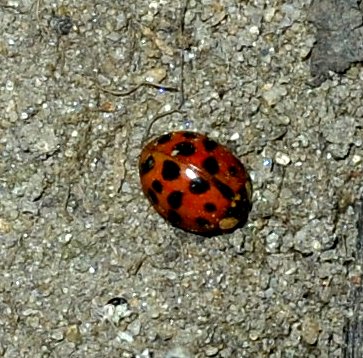
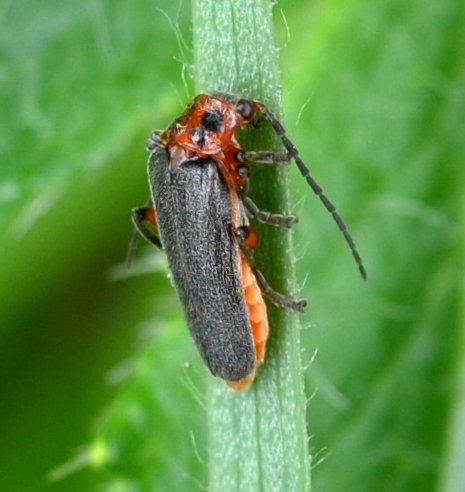
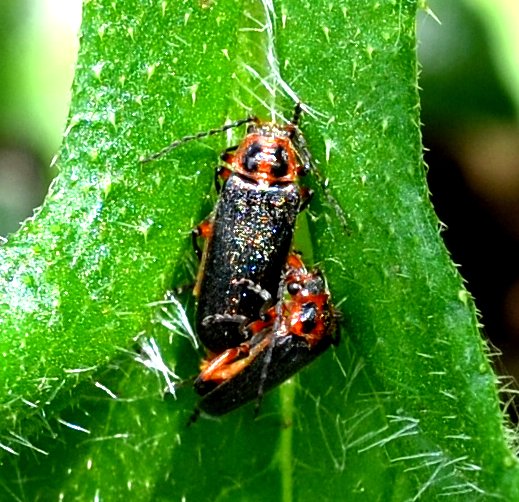
Here's a lily leaf beetle, gorgeous, but they can en masse do in a lot of lilies. Here they are replicating themselves. Picture 2 shows it on a Tiger Lily leaf. And this is one of those many kinds of black beetles, this one with a purple sheen.
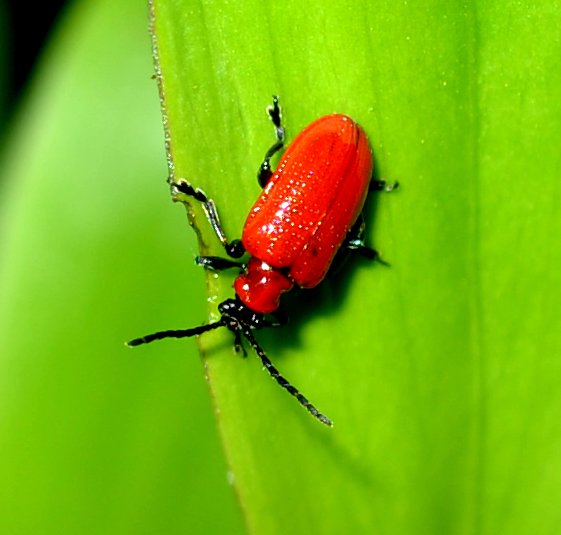
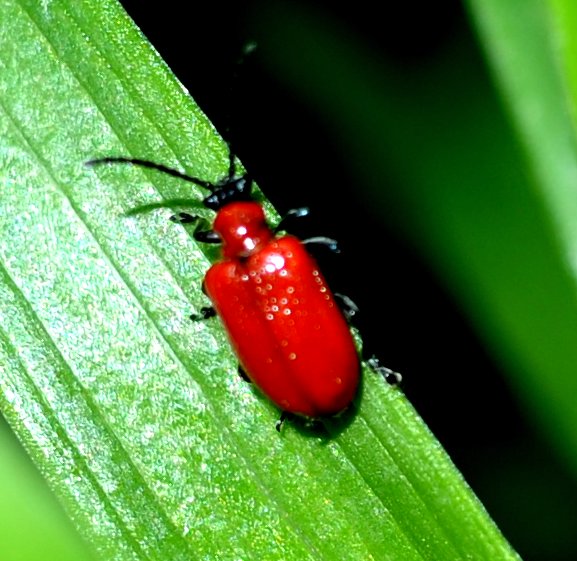
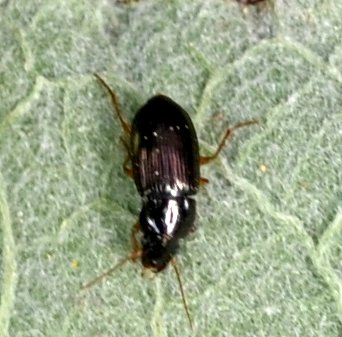
Finally (for now), a tiny rove beetle, a tiny tiny weevil, and a redbud bruchid.
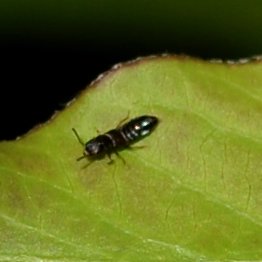
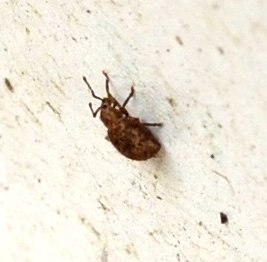
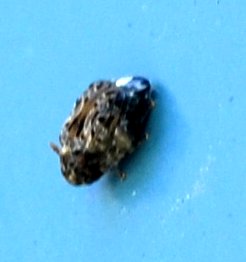
Wasn't that a lot of beetles in just two weeks? The bugs weren't slouches either. Here is a colony of velvety-looking black aphids on a weed in the north weed patch. Then finally this mirid bug appeared. You may recall it as a young four-lined plant bug, here as it appeared in June 2015.
in
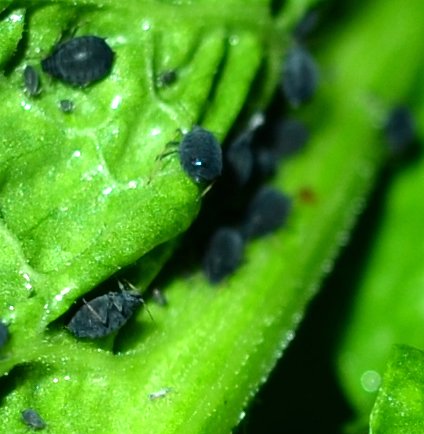
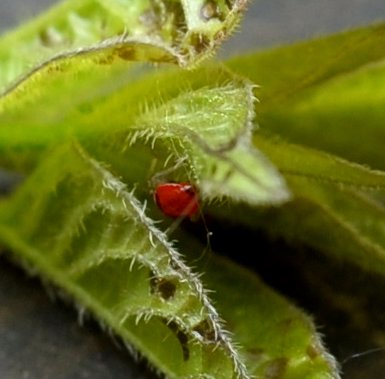
 adult 6 9 15.jpg)
Assassin bugs galore! Here is a little green lurid one, and a reddish, which also may be a color variation of the Luridus. The third image is actually the nymph of a damsel bug.
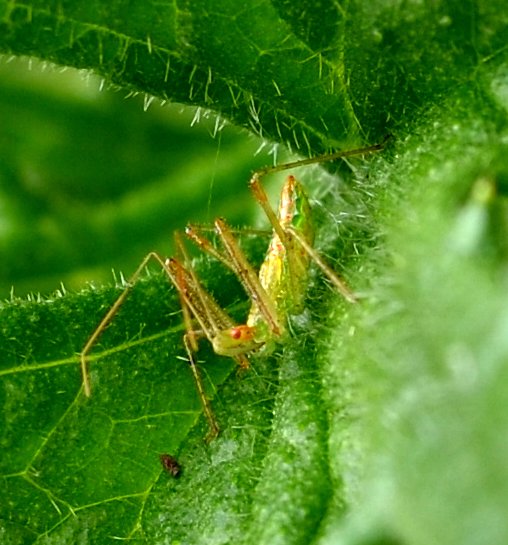
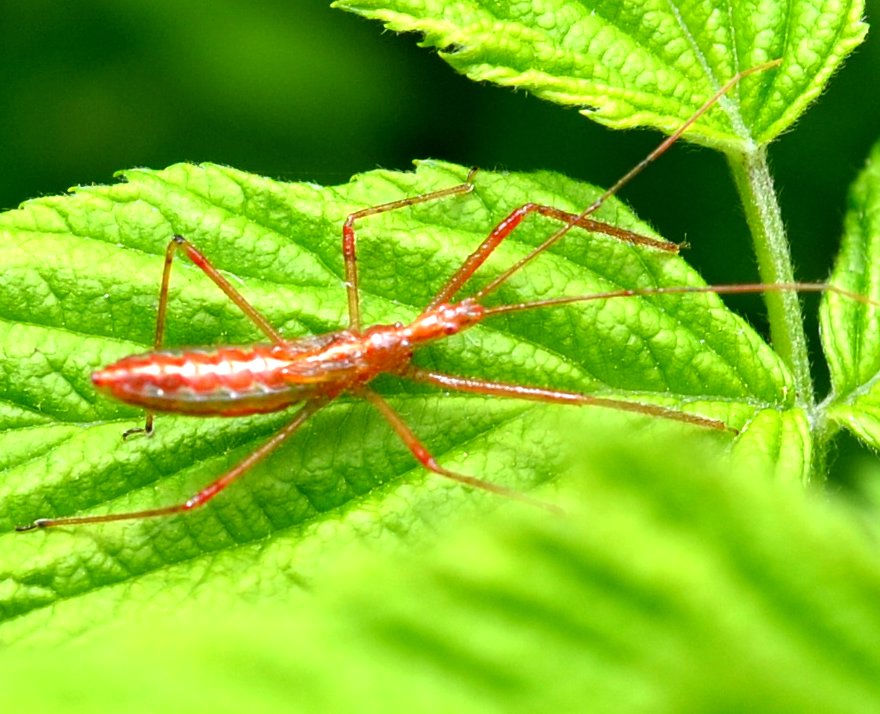
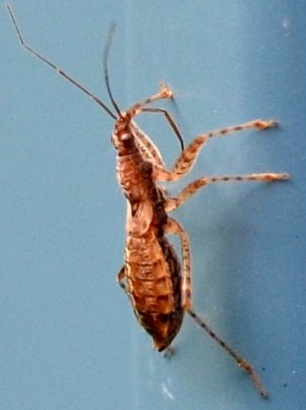

I'm not sure what bug this first one is. But I do know a stink bug when I see one. Here are two species, one grey and one reddish. So far I haven't smelled any malodorous ejections from any of these.
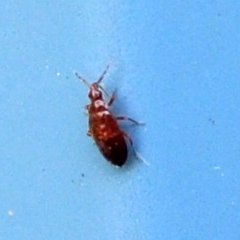
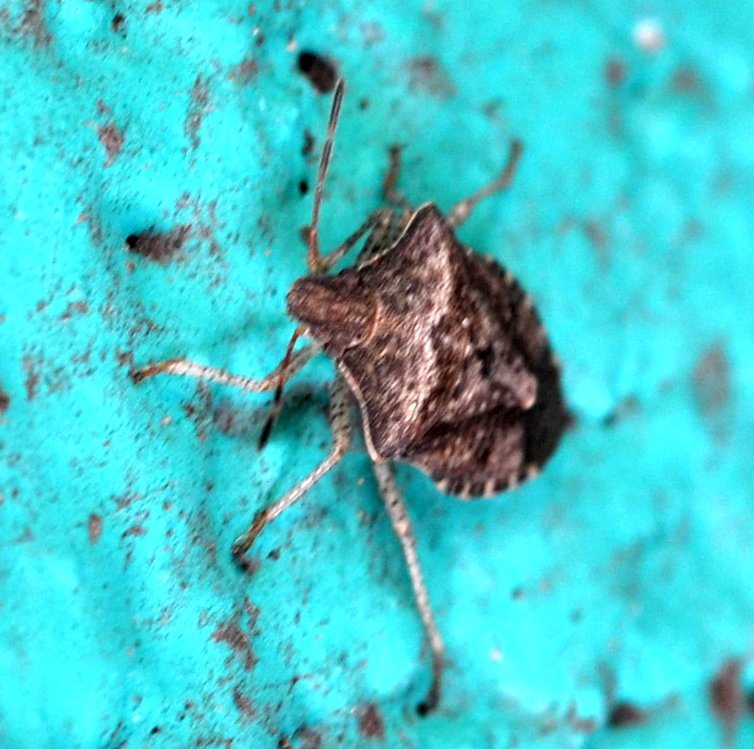

This little white-margined burrower is a frequent visitor, but this little treehopper is new this season. It may or may not be the same species (Keeled Treehopper, Entylia carinata) that lived on the thistle last year. The keels seem awfully short vertically.
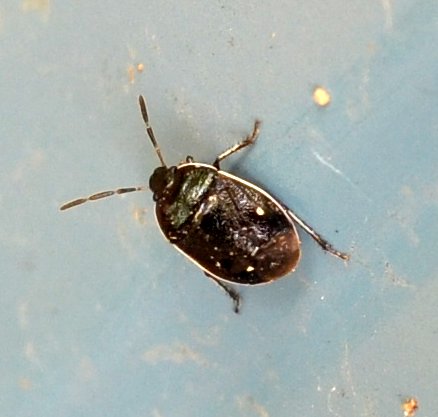
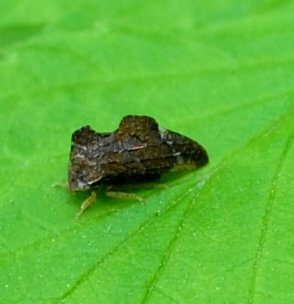
We had a pair of little damselflies at the pond the other day. I need to look up which is the male and which the female. One is mostly powdery blue and the one that most resembles it in Bugguide.net is an Eastern forktail. The other has a bit of brown added. Alas, it is NOT the male Eastern forktail, and I can't seem to isolate it from the Bugguide search, YET. They are now submitted to iNaturalist.org though.
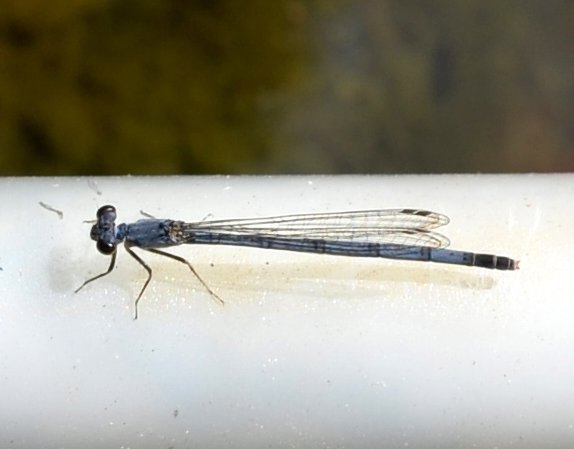
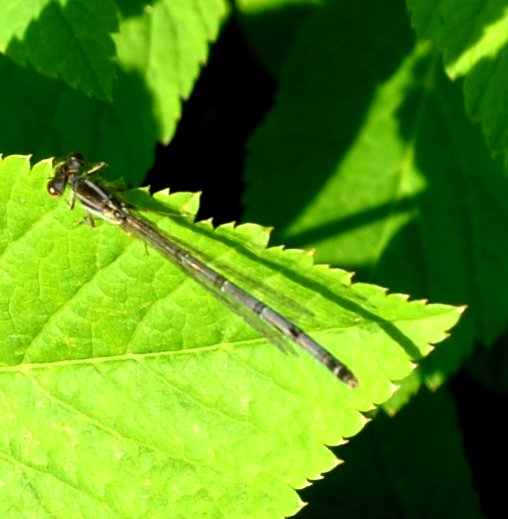
The other night my neighbor came by in the dark and found me outside taking pictures. She had a bucket with two Eastern grey tree frogs. We put them into the pond, but the next day they were nowhere to be seen. I was glad not to see any bodies. On the other hand, yesterday I found a tiny baby tree frog (a little more than an inch long) - sitting atop a long pointy daylily leaf.
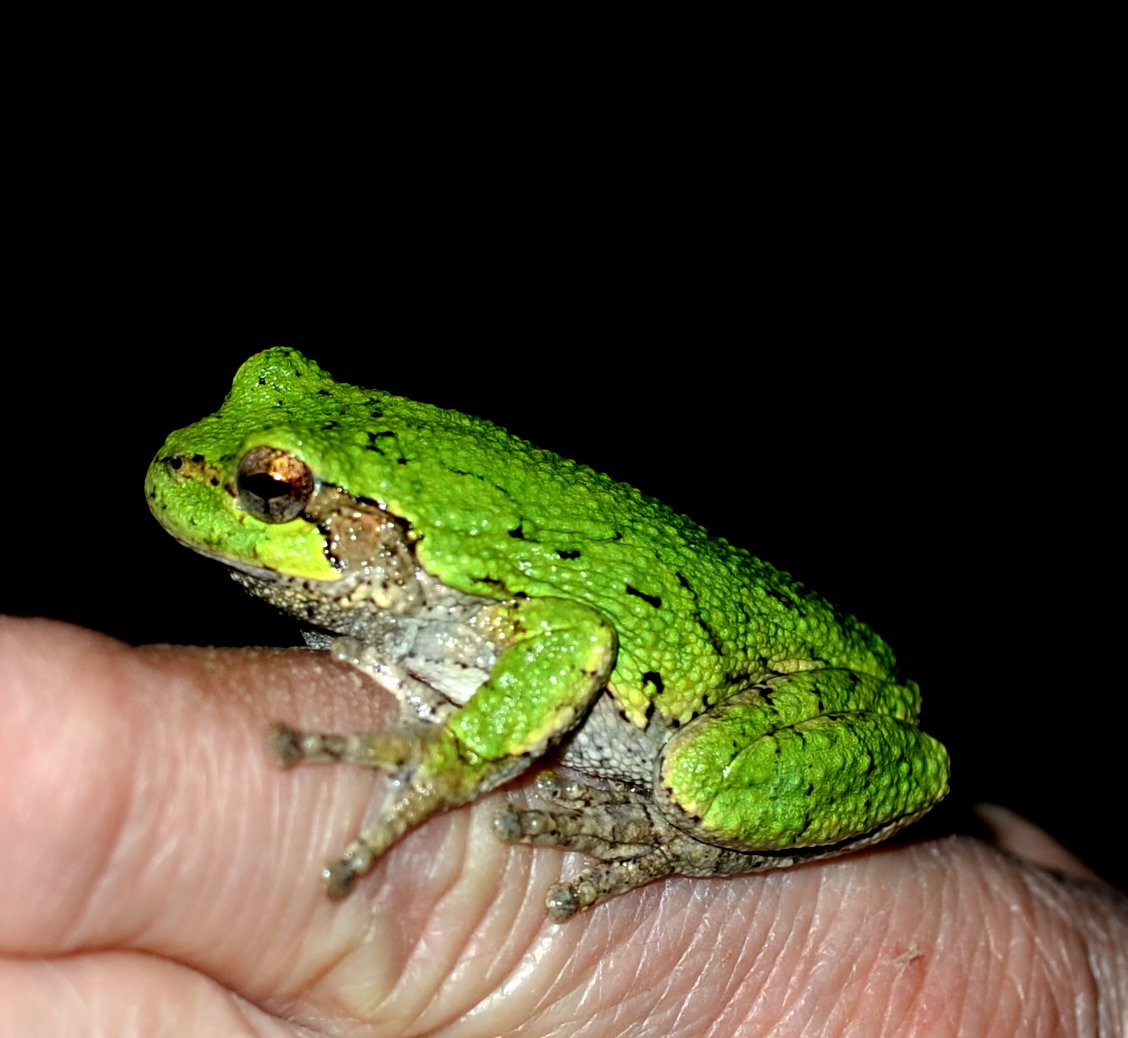
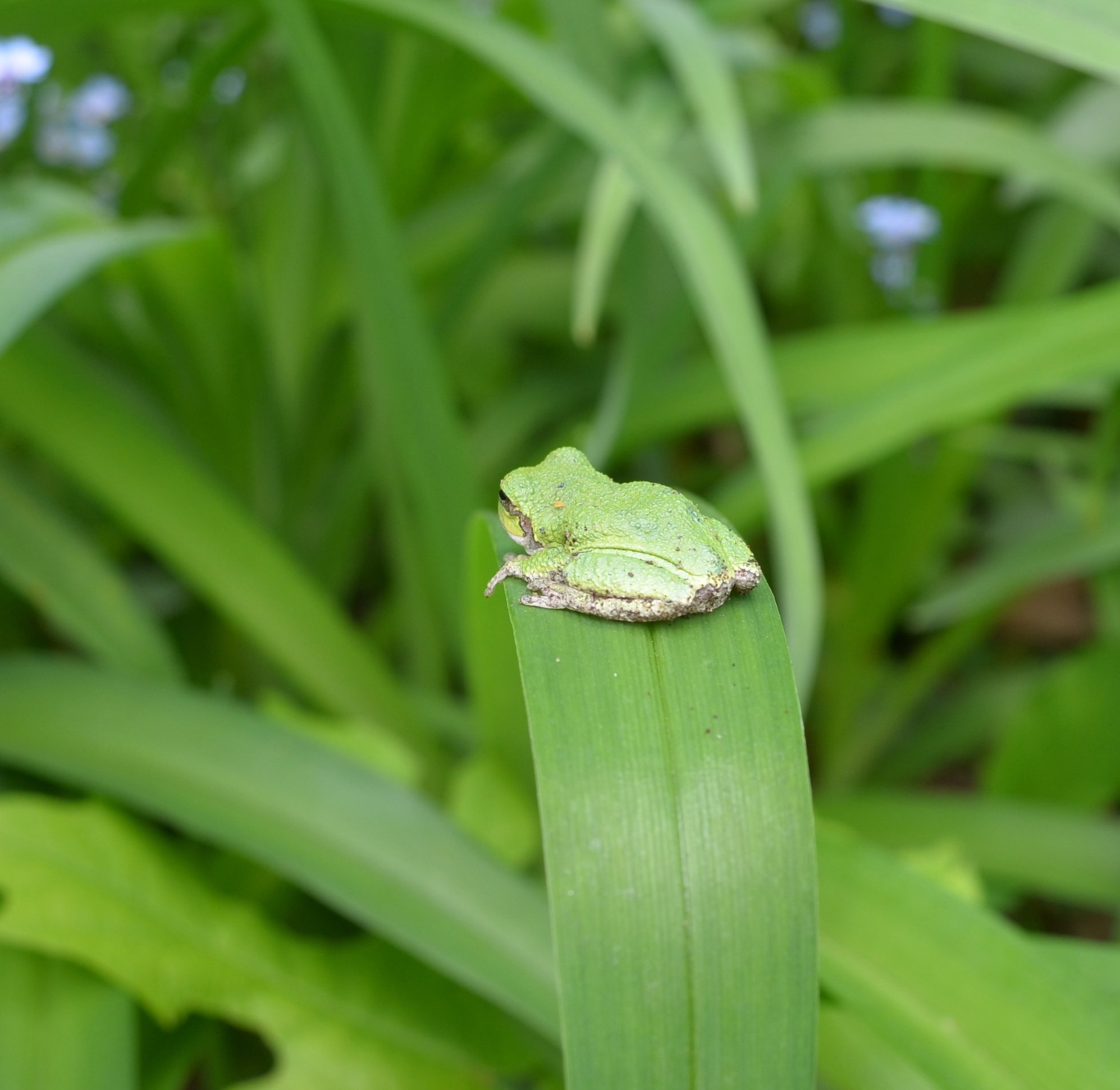
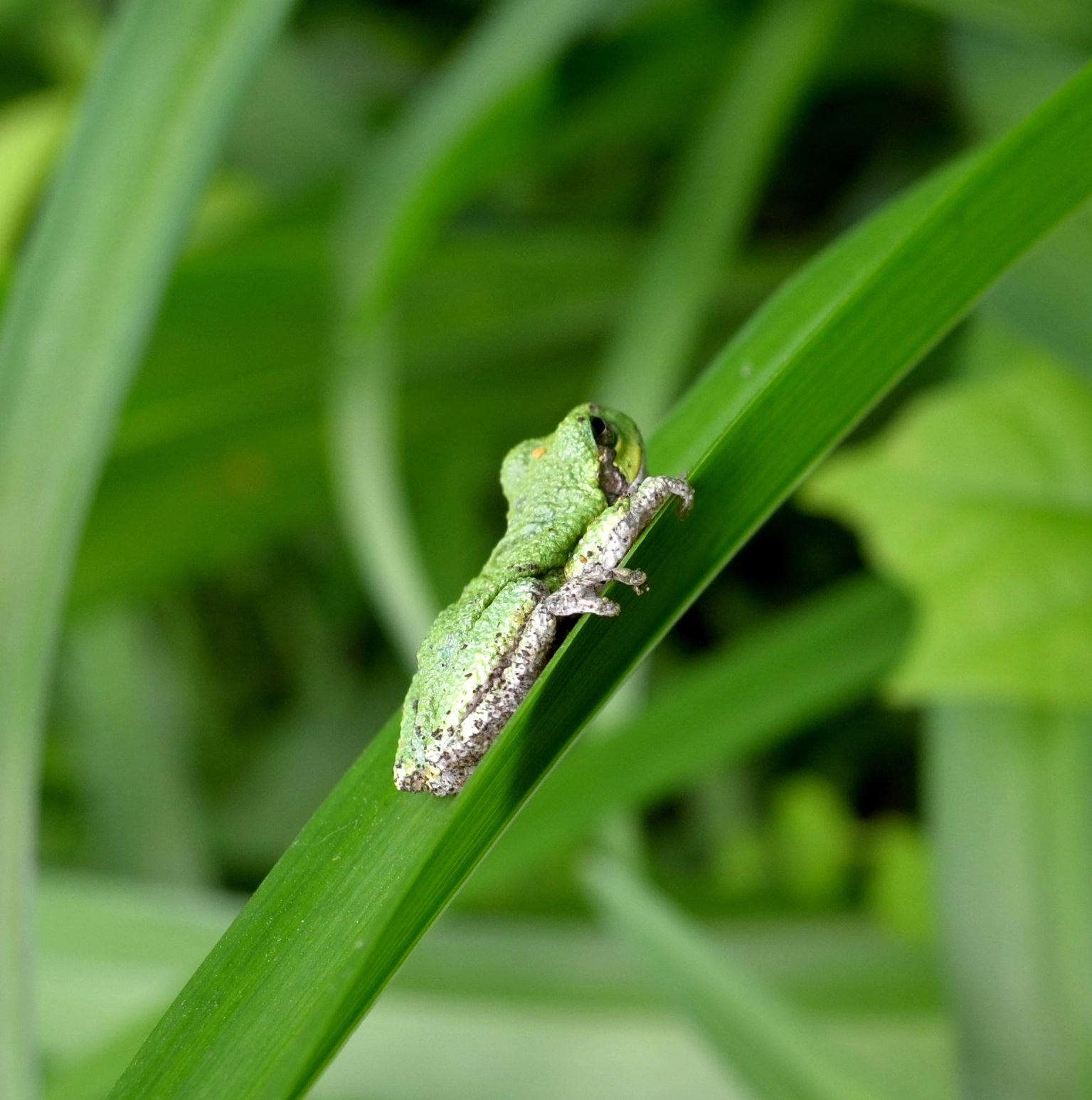
There were so many flies this time that I am going to skip the ones you've already seen, OK? Those big flies also come in brilliant blue! Oh dear, you've already seen this one, but I thought her head-do was super! Let me just say, gold was the word, as many of those gnats were still flying. I do like these little flies with the blue wings.
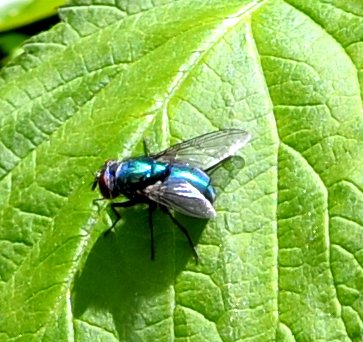
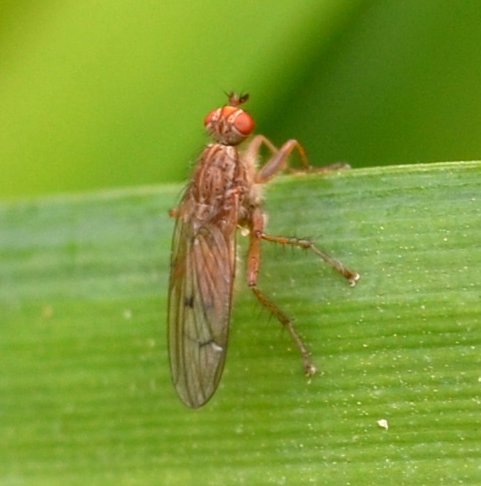
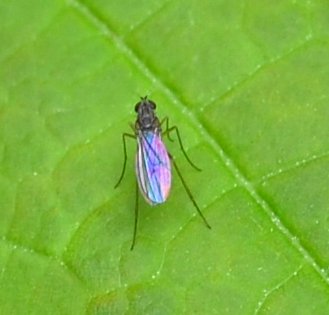
Here are a couple of hoverflies. The first was somewhat of a puzzle, but the second does look like one we saw last summer. The snipe is back too! They were all over the place last summer.
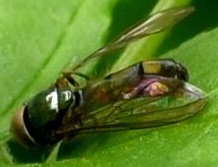
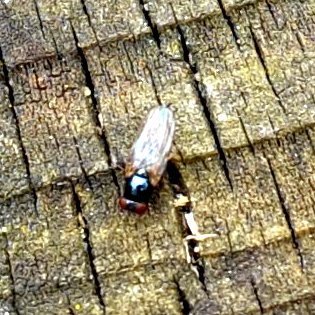
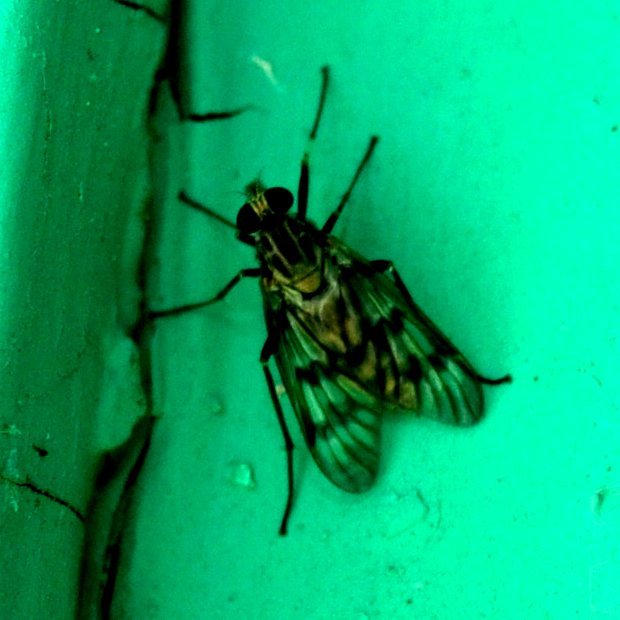
Here's this yellow-winged red-eyed fly that we had a lot of last year this time, and we're having a lot of them now. And one that resembles a bee somewhat. But it's a fly. It seems to be keeping a lookout for something.
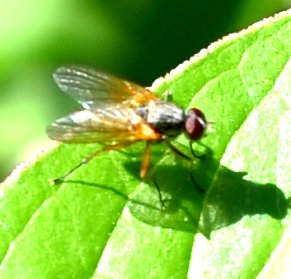
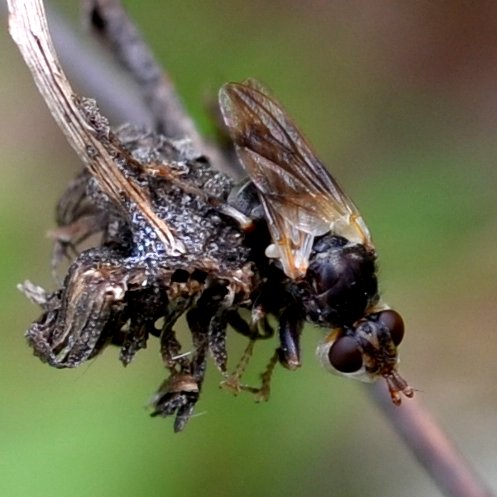
After being surrounded by all these flies, I need a beauty break. So here's a portrait of the solomon seal, which is one of the first nectar sources for the hummingbirds when they come back in the spring. This is the columbine that is blooming right now in several spots. The yellow flower in the back is now blooming all over the south side yard. It's a glorified buttercup called a ranunculus. The last one is the white primrose, still blooming strong while the others are starting to fade. Take a deep breath, because I have an array of midges for you.

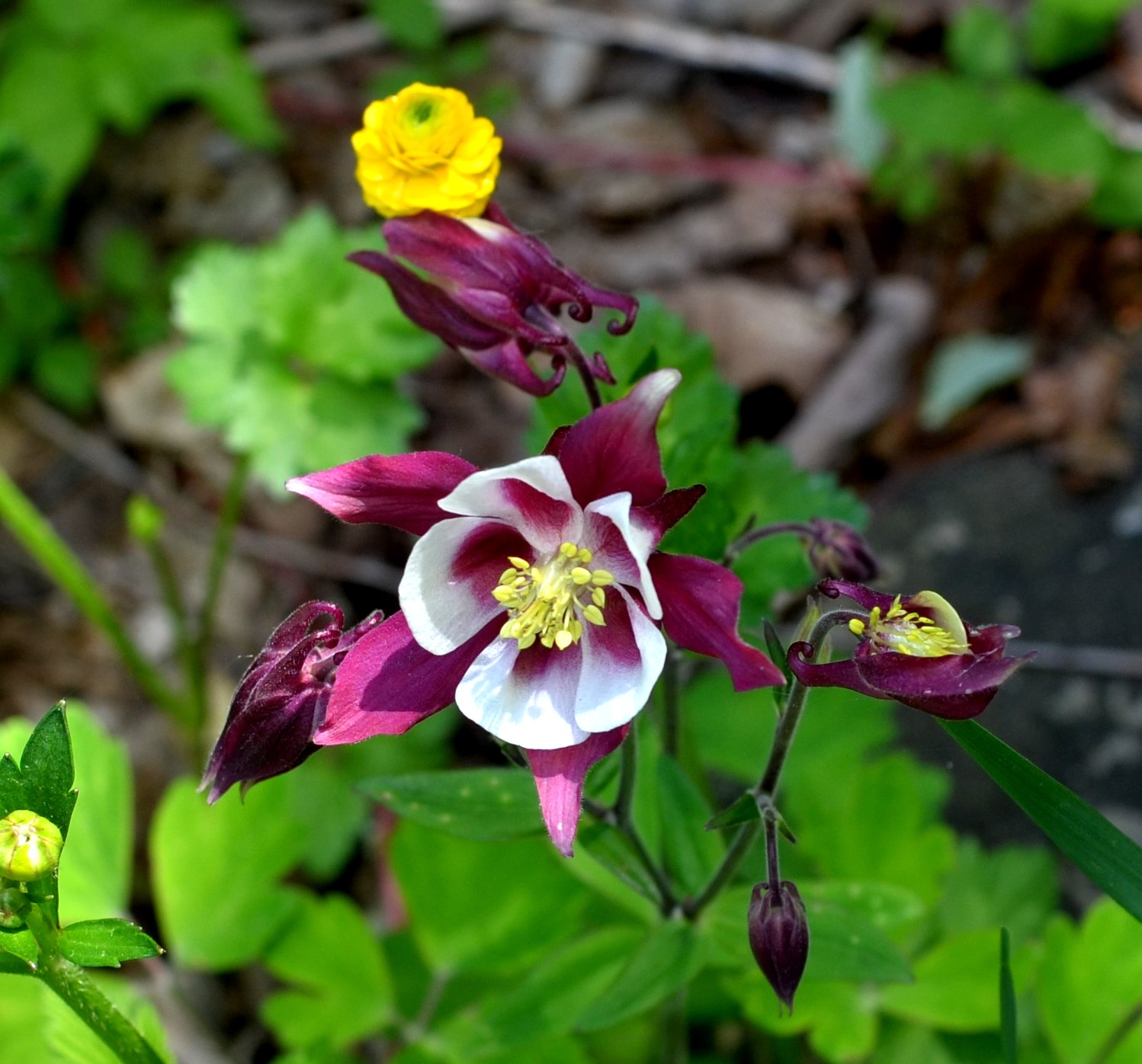
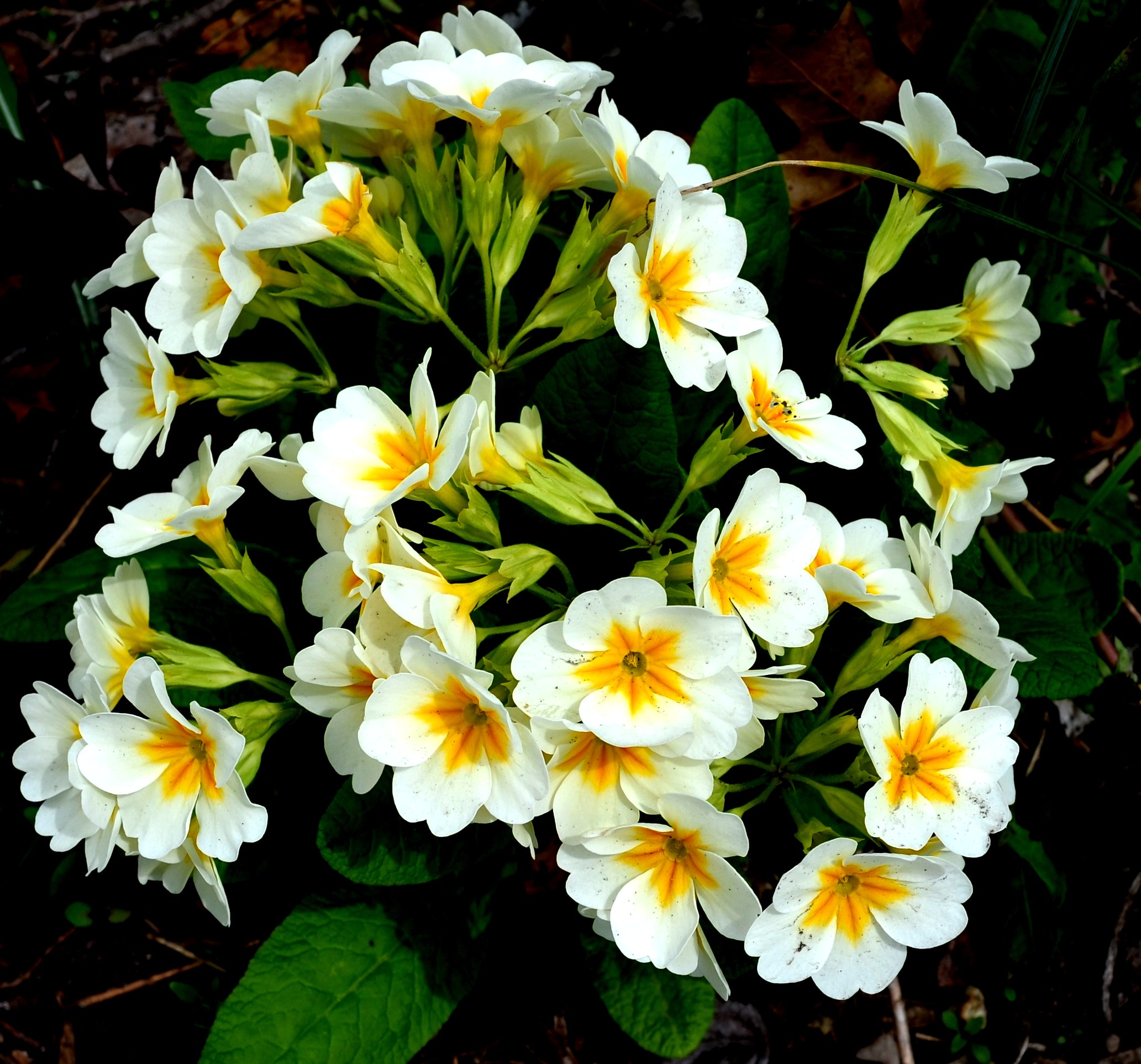
Here are some midges!
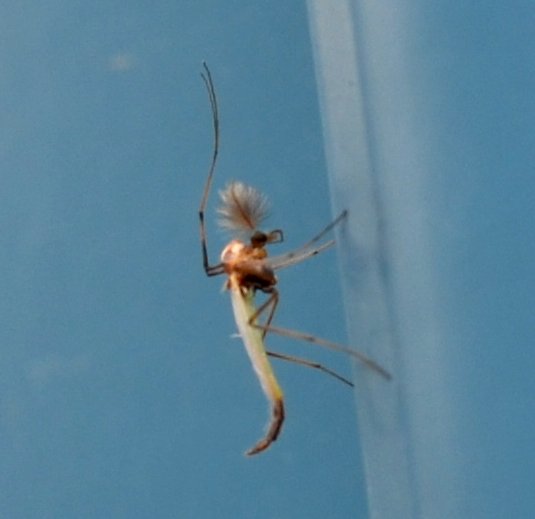
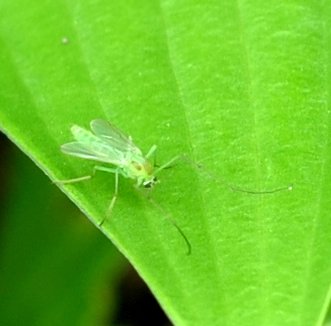
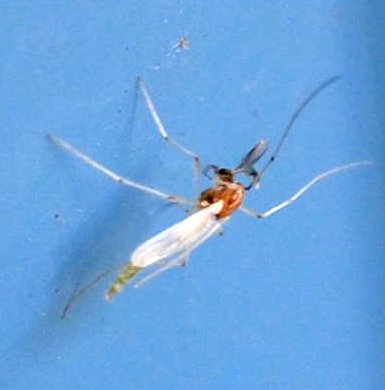
Now some mosquitoes. The females have the big biting apparatus on their sweet faces. Since they have white and black bands on the legs, they might be genus Aedes.
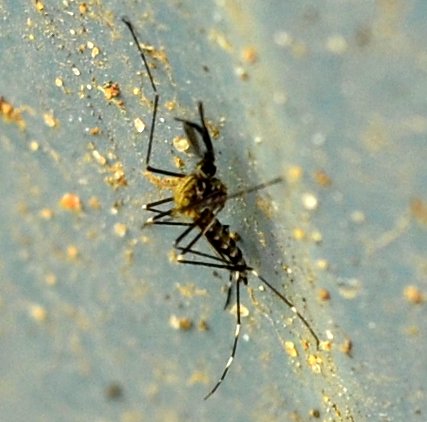 .
.
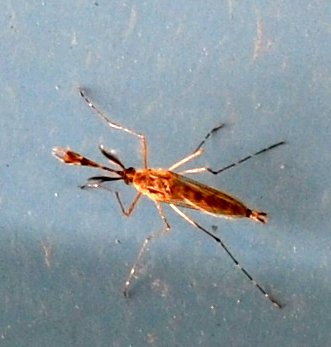
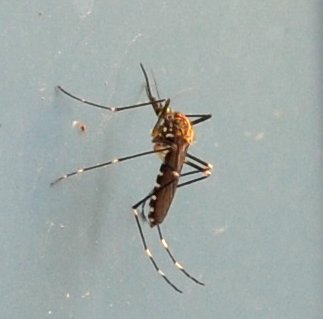
We had quite a few moths. Most of them are probably leaf miners for various plants. Oh wait. I do have one mayfly picture. I took it in the dark - it was way up the siding and so I had to hold the camera up and aim - so this pic is much better than it had any right to be. OK, I have got that out of my system. Here are those tiny moths. This one is a grass miner, and the next is a leaf blotch miner. As I understand these names, a "Miner" is a moth whose larvae wiggle around inside a leaf, leaving a wiggly trail of light leaf color, whereas a leaf blotch miner makes a blotch that just spreads out in the leaf.
This last one I'm assuming is a miner by how it stands.
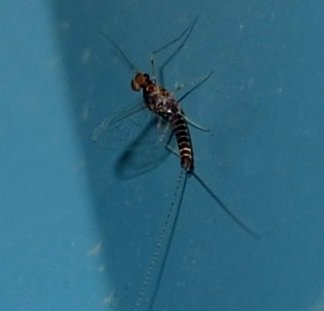
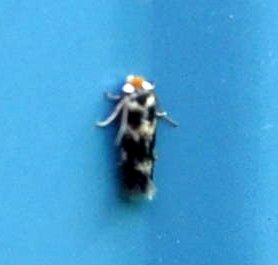
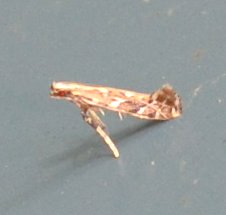
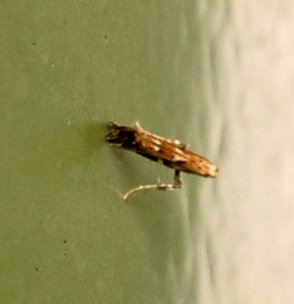
A few more moths. The last "moth" may be a caddisfly. And finally an outlier. It may be a relative of the usual pillbugs - the ones that roll themselves up into a ball, hence their other name - roly-polies.
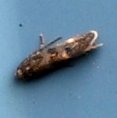

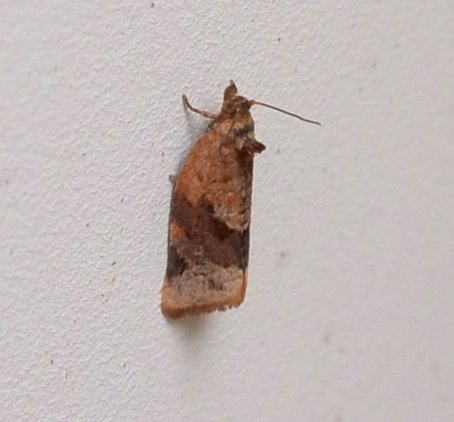
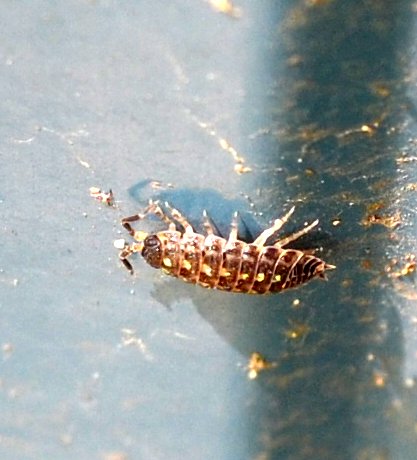
Spider time! This first is a white crab spider. Next one that seems to have dyed its legs to match the purple of the buds on this flower. And if you look hard, you'll see a Ground Crab Spider sitting on the bottom of the shop.
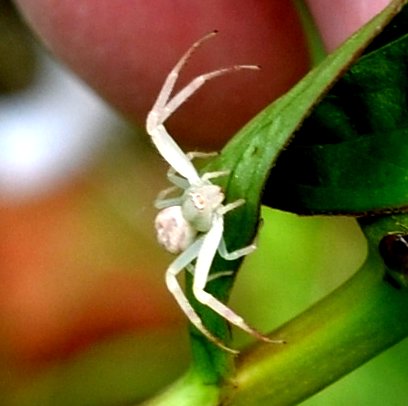
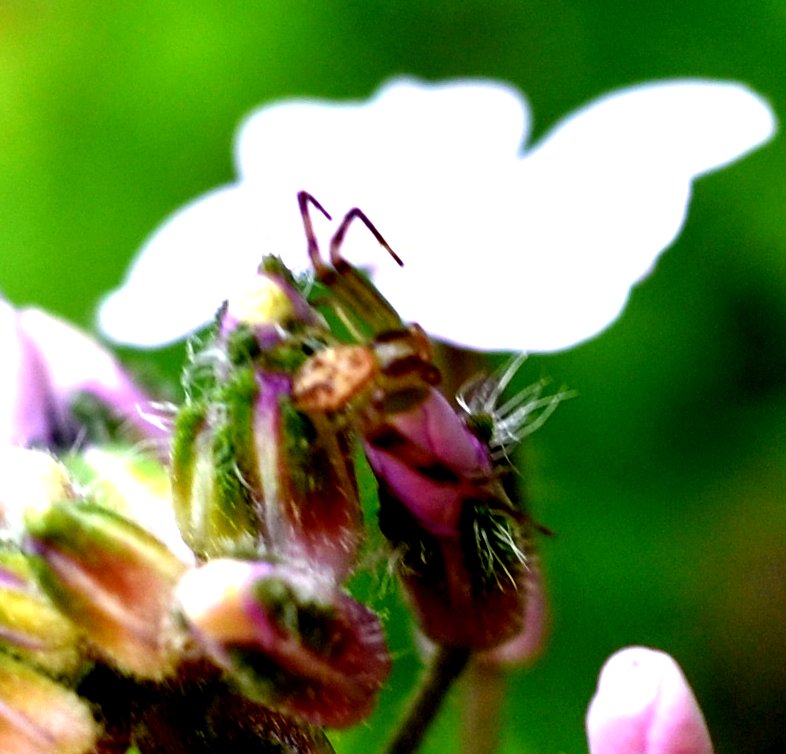
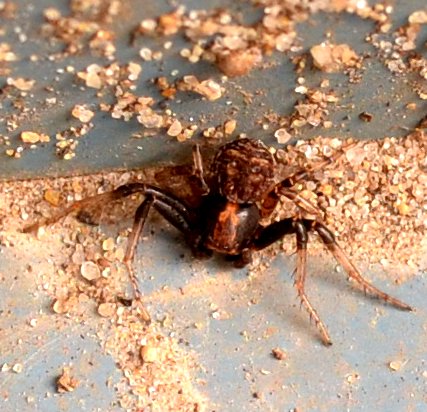
First up on this row, a common house spider which has grown to be capable of being photographed. Another is guarding this case, wonder why? The ghosts are back!
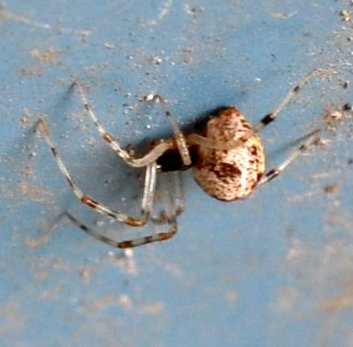
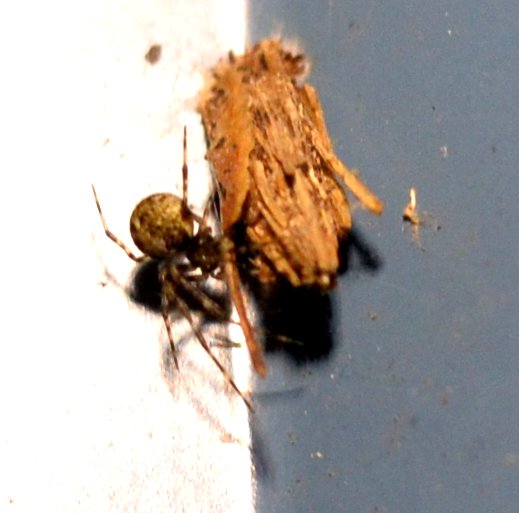
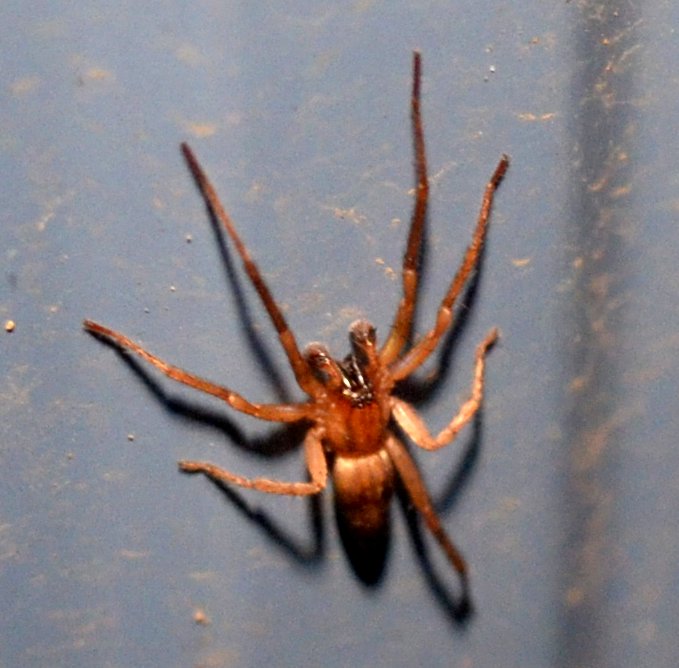
This Jumping Spider was hard to see in the change of light from corner to corner. One staring right at you! And finally, a mottled jumping spider, or maybe a Wolf Spider.
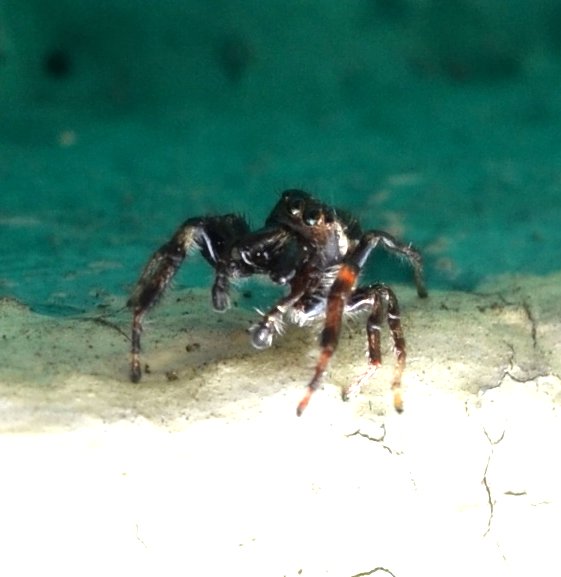
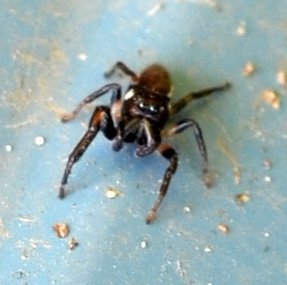 "
"
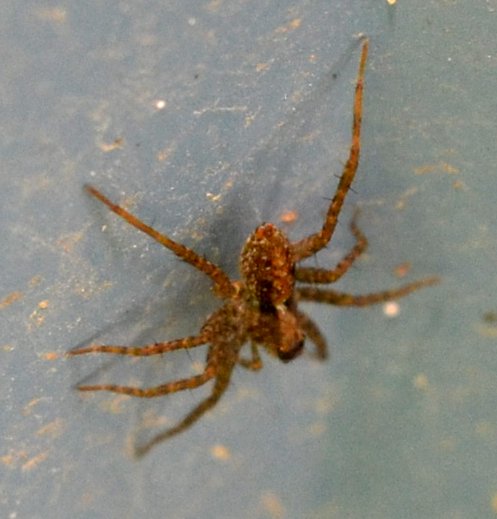
A couple of orb weavers were out in their orbs. First, a cross orbweaver, which greeted me when I opened my front door a few days ago. And this tiny Orchard orb weaver was hanging in a space between some plants. Finally this six-spotted orb weaver.
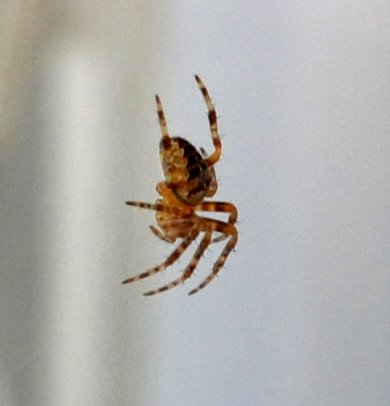
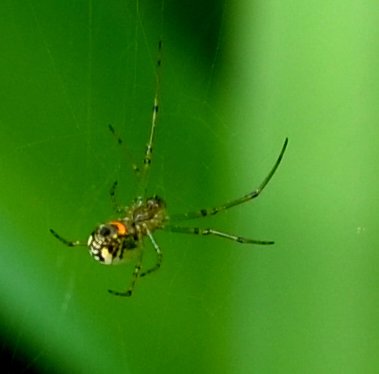
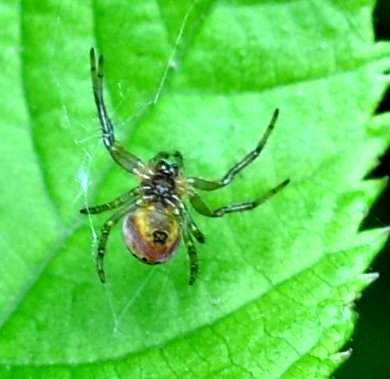
Surprise! After the toad massacre, I was afraid that there were no toads left in the yard. But good news, I almost trod on this large female American toad Surprise! There are now three eggs in the paper wasps' nest.
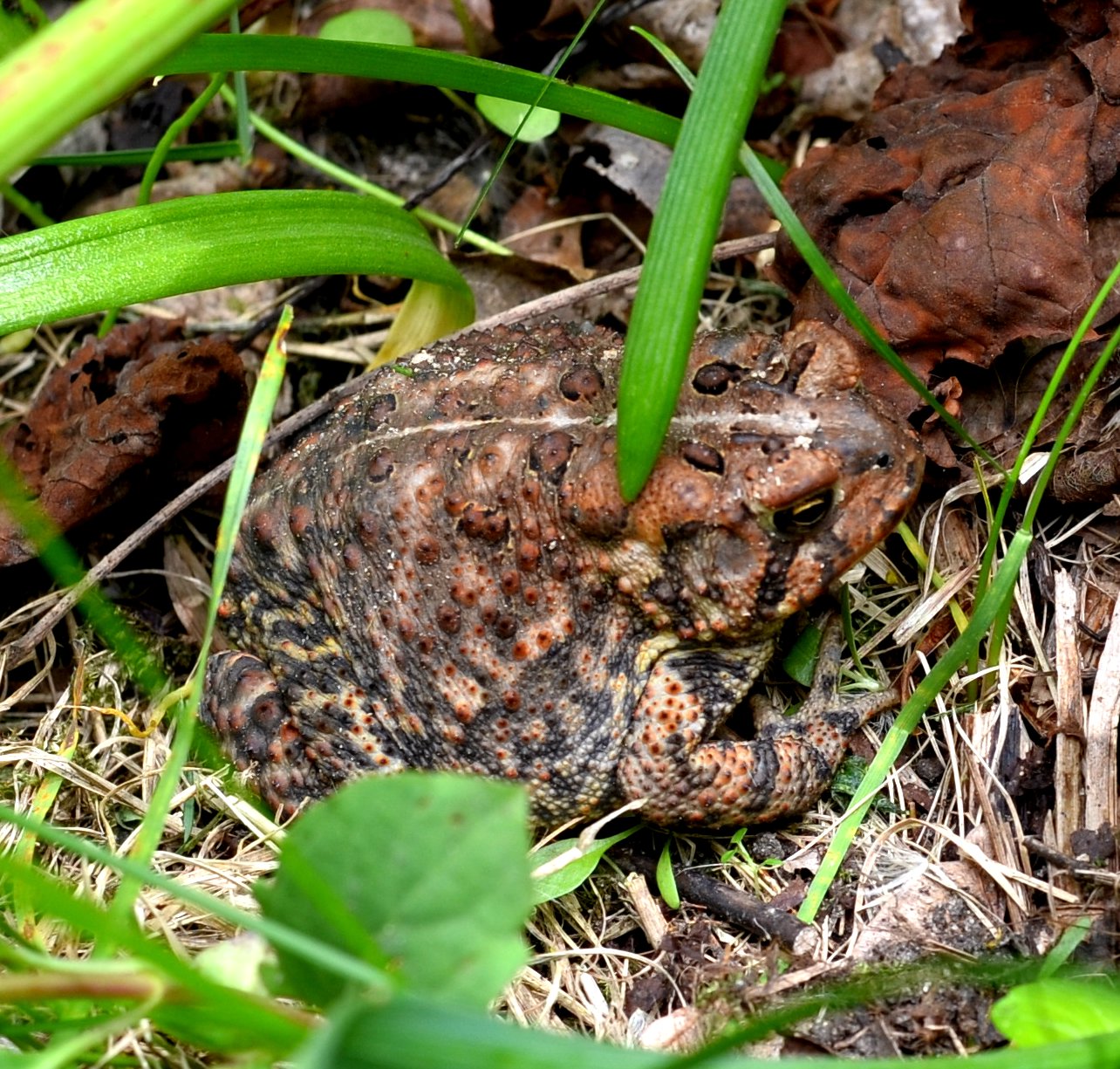
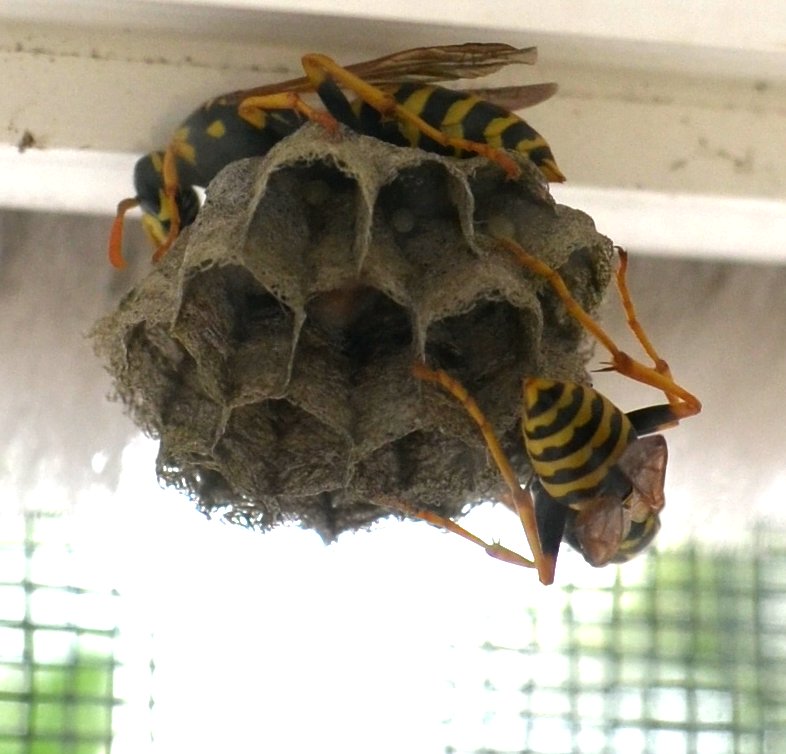
We had many many species of hymenopterans out there. You already saw the bees. But we had many others, some of which are braconid wasps, and some ichneumon wasps. Since I don't know many of their names for sure, here they are. You can see what info I have on them from the NAMES of the JPEG images.
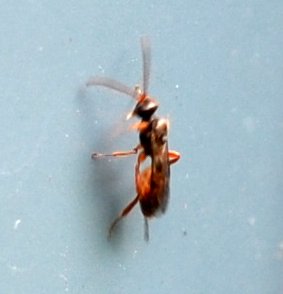
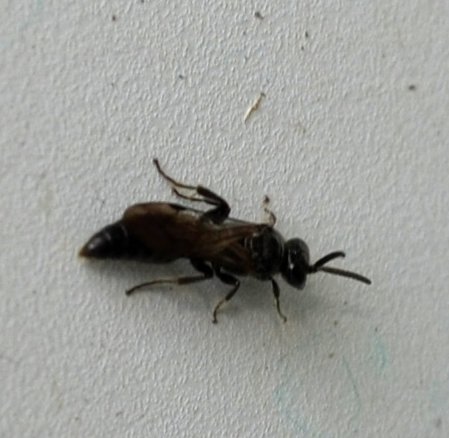
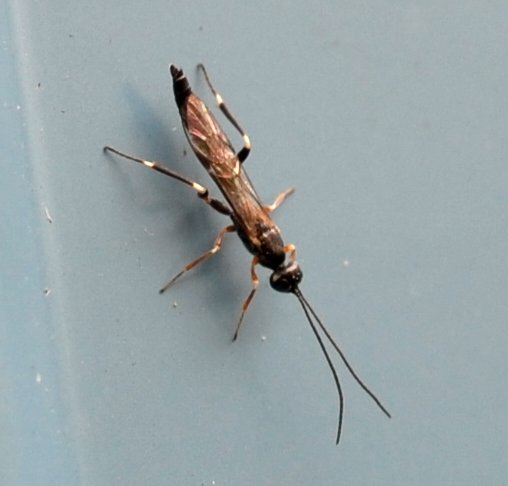
More mystery hymenopterans!
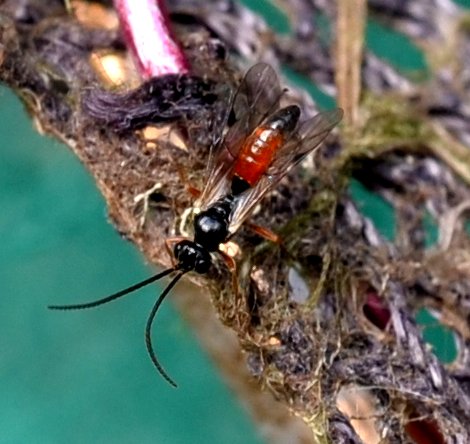
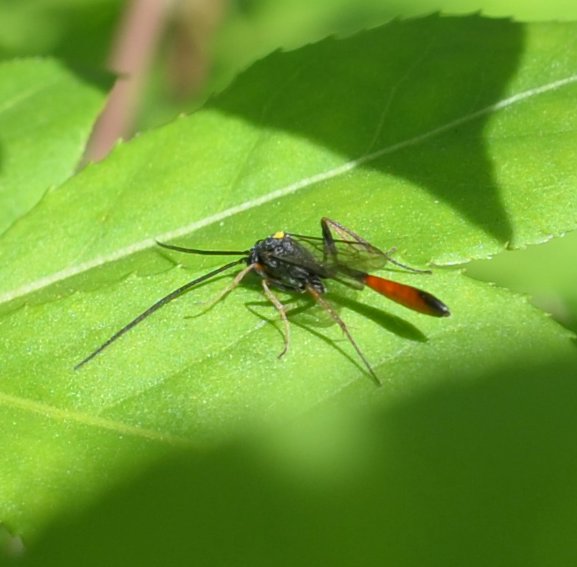
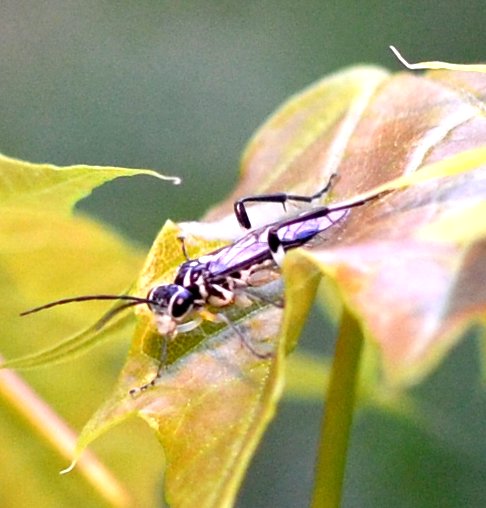
Folks, that is about it for this time! Thanks for reading this. It makes me feel good that people I love are getting these pretty pictures and know I am thinking of you all. Remember the URL for the talk is way up at the top of this diary.
Back to May 8
On to June 1
Back to 2016 menu
Back to main menu
copyright Martha O'Kennon 2016









 .
.



















 adult 6 9 15.jpg)



























 .
.

















 "
"











